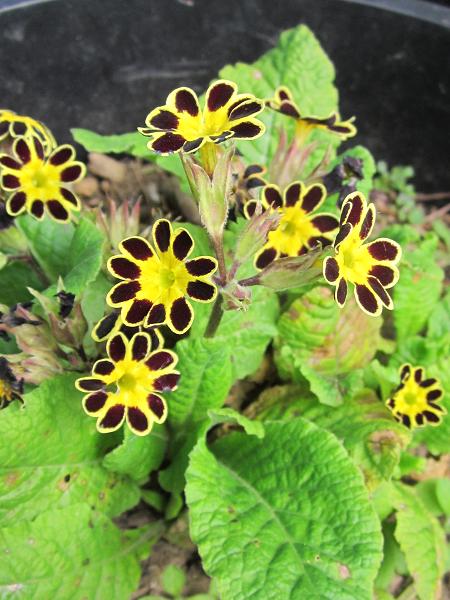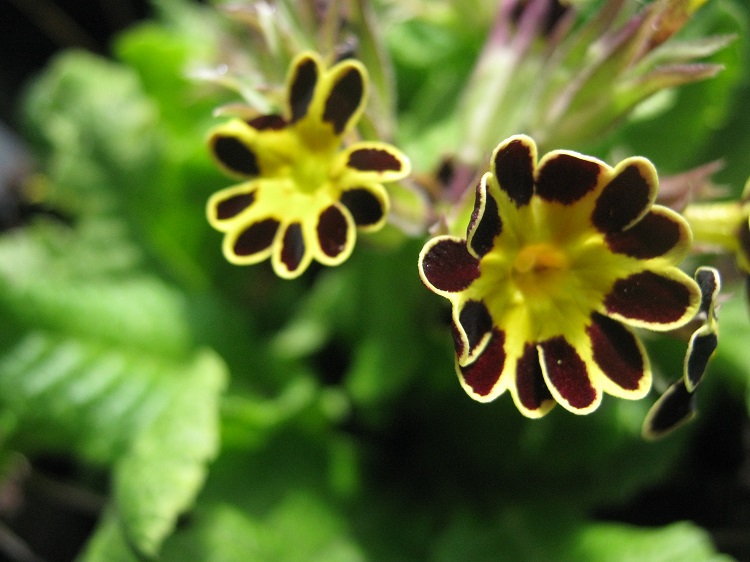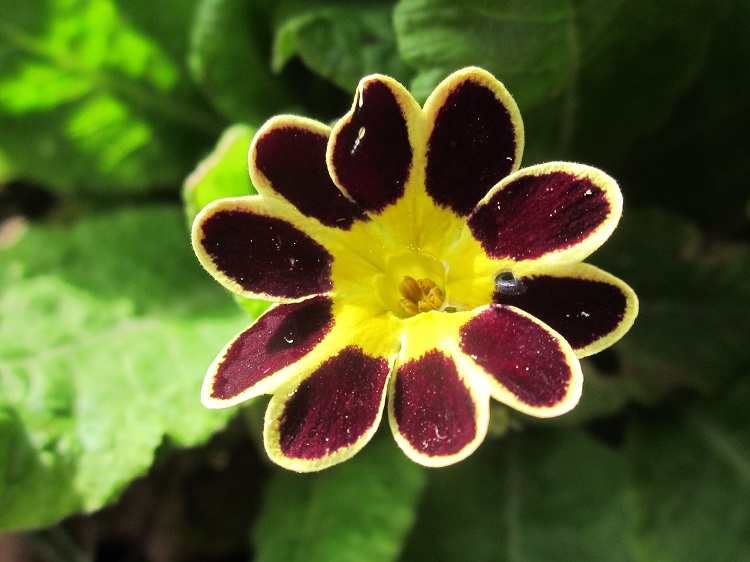 |
I grow Gold Laced primulas occasionally because I camnnot resist the charm of the dark flowers. Easily raised from seed, they do not live for long in the garden here. Sachaverel Sitwell summed up their history in 'Old Fashioned Flowers' and his comments are well worth quoting: "The old Exhibition Gold Laced Polyanthus is little now but a glorious name. There can be but few persons living who have seen it in perfection. this is distinctively an English florist's flower, coming more especially from Lancashire and the North, and also from Falkirk in Scotland. That is to say, the Gold Laced Polyanthus was the hobby and plaything of the weavers and miners. And this, again, is an indication as to the date of its prosperity, a period which can be put between 1820 and 1880, covering two generations of working men, and reaching its climax in the 'forties or 'fifties of last century. The process of perfecting this flower did not begin until early in the nineteenth century. The Gardener and Practical Florist for 1843 published a table of properties, or list of points, drawn up by Glenny, the well-known practical gardener. This proves that, by 1840, there must have been a good number of named varieties of the laced flower. There is even a theory according to which Rex Theodore and Derncleughii were, in origin, chance seedlings appearing in the stock of some dealer in these gold and silver laced varieties. This, were it true, would either reduce the antiquity of these two old flowers, or else increase that of the varieties we are discussing. However there is ample evidence from old books that the Gold Laced Polyanthus was known as early as 1790, though not yet in named varieties, so it may be that the ancestry of Rex Theodore and Derncleughii are more or less established, while, at the same time, the Gold Laced Polyanthus had a greater fame in the eighteenth century than has been suspected. In the days of its popularity, the utmost care and attention were lavished upon this flower. In old florists' magazines the most minute directions are laid down for its cultivation. It cannot be doubted that the Polyanthus could be raised again to the same degree of perfection, were there persons posessed of the necessary patience and perseverance. But, in the first place, the flower is so nearly extinct that the taste for it is difficult to arouse. The name, Gold or Silver Laced Polyanthus, suggests Gold or Silver Pheasants, Satyr Tragopans and their world of exotic or far-Indian plumage. And it is these riches of the imagination, but for humble homes, that were the stern reality of this flower. Luckily, there are at least two old Gold Laced Polyanthuses, though not quite of this exhibition type, still to be obtained, and these will give and idea of its ancient glories. The flowers in question ere Old Saturn, a crimson Gold Laced Polyanthus (all the Gold Laced count as Single), and Captain Jones, which is almost black and ringed with gold. These plants are to be had from at least four sources in Ireland. They are Irish in origin, and smaller in flower and in truss than the Exhibition flowers of the North or of the Lowlands. It is only natural that this should be so in old plants not grown for show or exhibition, but Old Saturn and Captain Jones must always have been of this character. They date, it may be conjectured, from the thirties or forties of last century. Both flowers are startling in their trimness and conformity; but they will not, unfortunately, produce trusses of more than three or four heads. Other old gold Laced Polyanthuses have also been obtained by the writer from Ireland. Four or five types have come from two or three different collectors, but the results could not be called interesting. The flowers, which are ragged and rather faded, apart from these signs of an old or weak constitution, have but little to differentiate them from the ordinary Gold Laced Polyanthus to be bought to-day from any seedsman. It is upon Old Saturn and Captain Jones that our principles must stand, for these flowers do really give the reflection of something beautiful that is missing from our gardens. An authority on this subject, writing in the Gardener's Chronicle of recent date, states that the only varieties left to-day that were grown fifty to seventy years ago are Duke of Wellington, Cheshire Favourite, Bucks' George IV, Formosa, Lancashire Hero (not to be confused with the Lancashire Hero Auricula), Black Prince, Sir Sydney Smith and Nicholson's King. I find it nearly impossible to believe that this is the case. No one has ever yet come forward who claims to posess even a single one of these old plants. That is not to say that they do not exist in perhaps one or two cases, at most, somewhere in the North; but there is no question, at any rate, of their being grown upon the scale of more than a few individual plants." |
|
| 3rd May 2013 | ||


